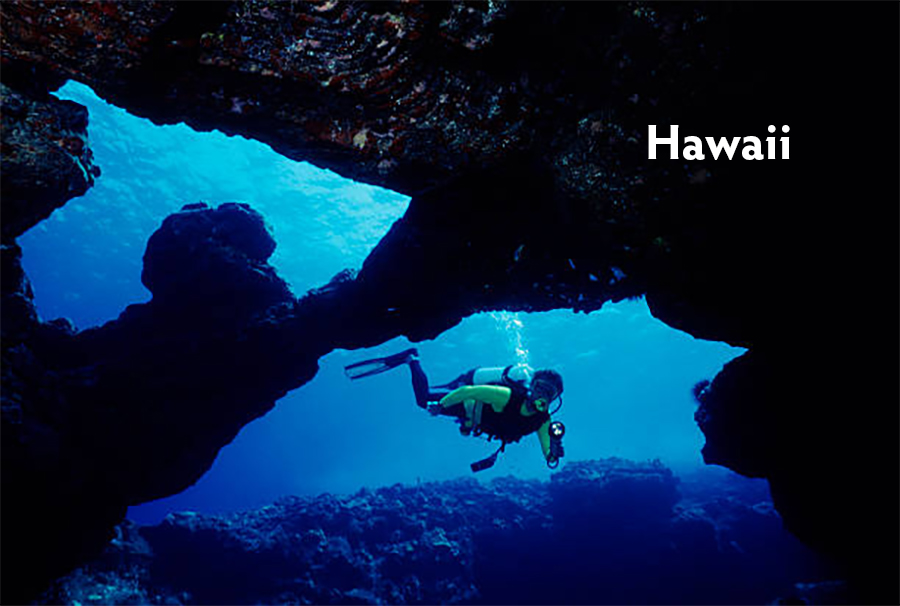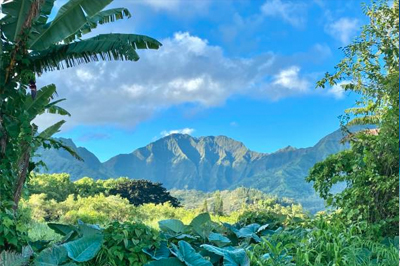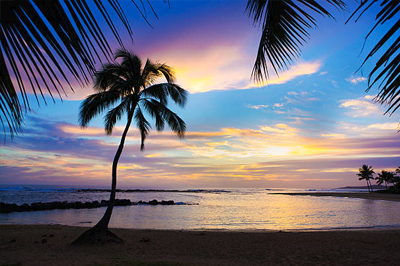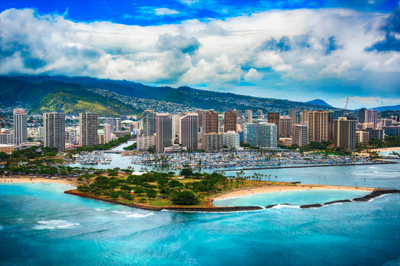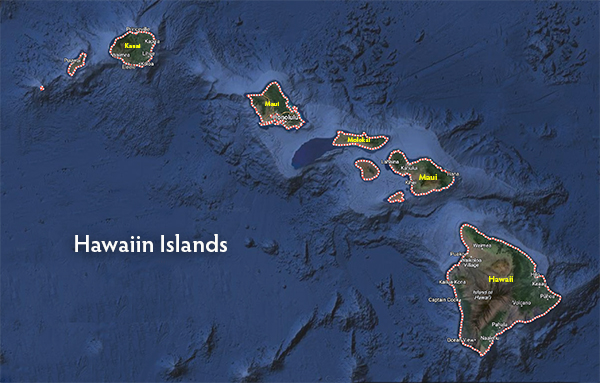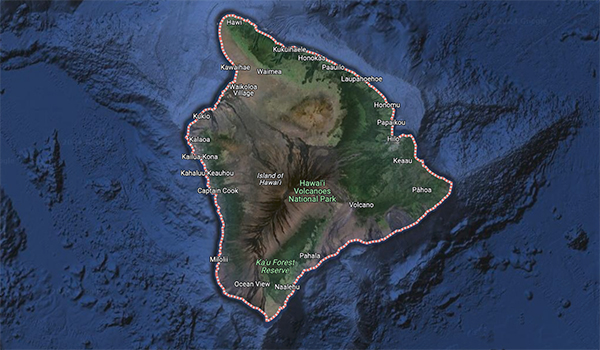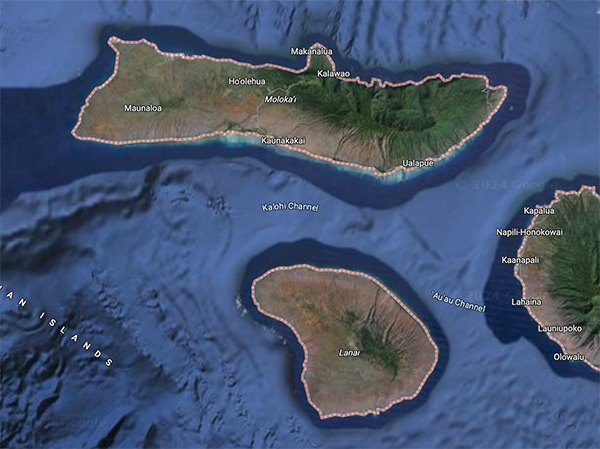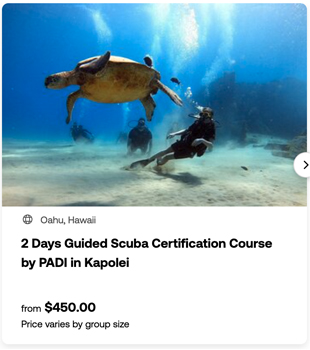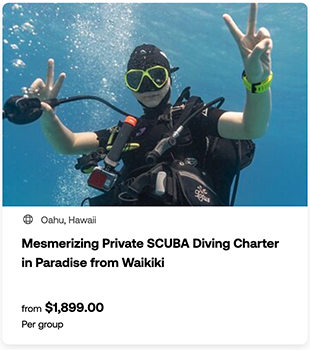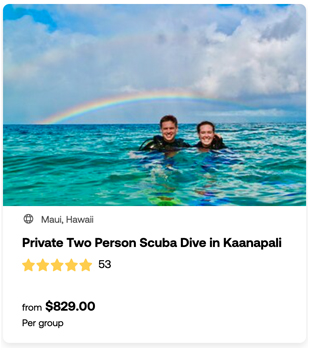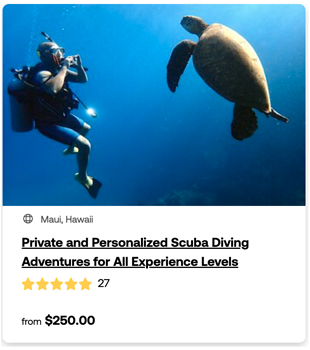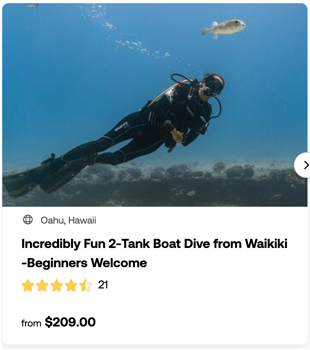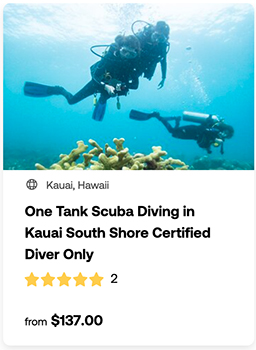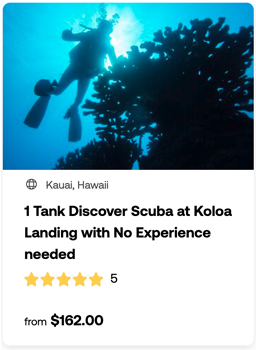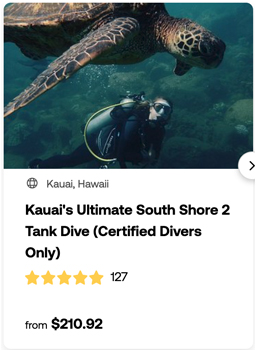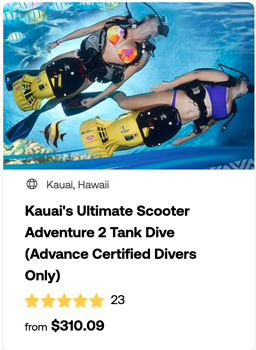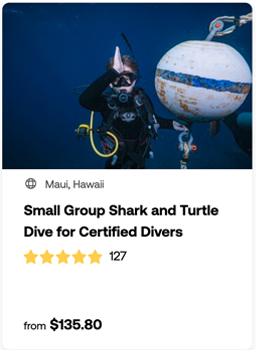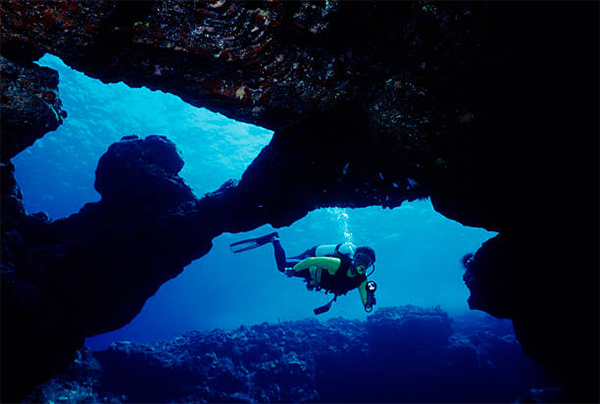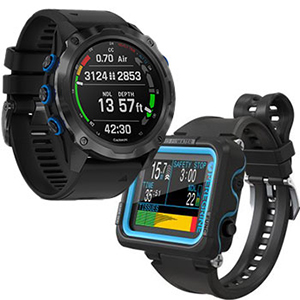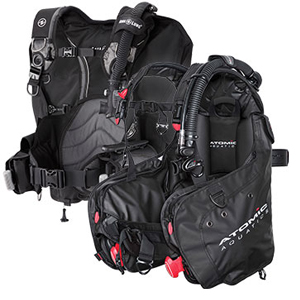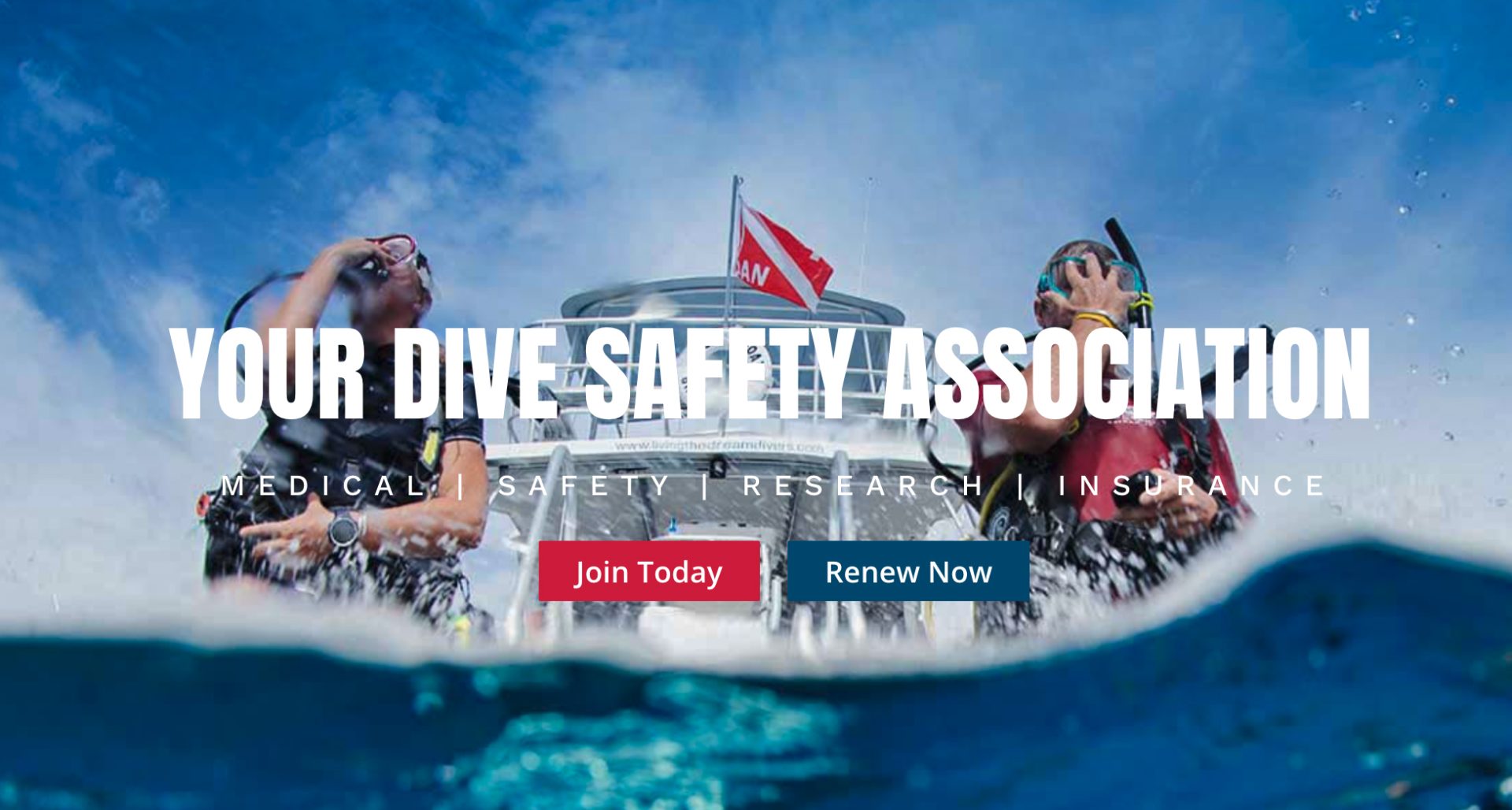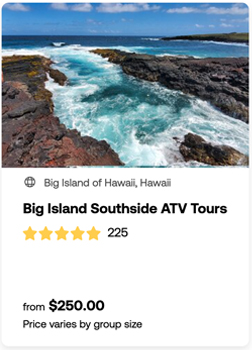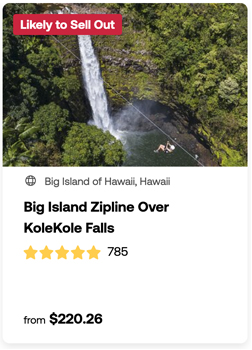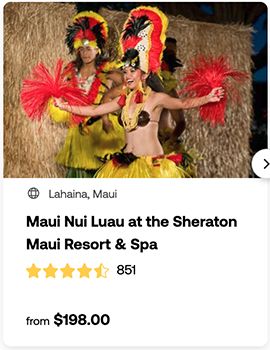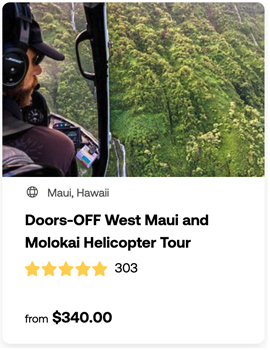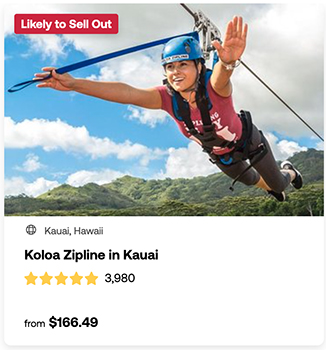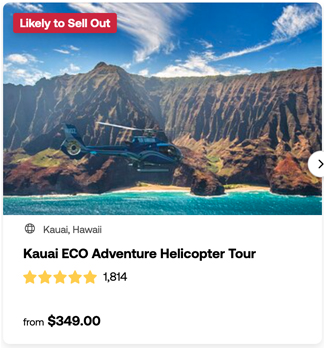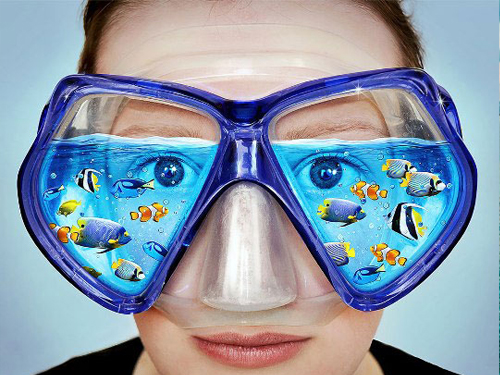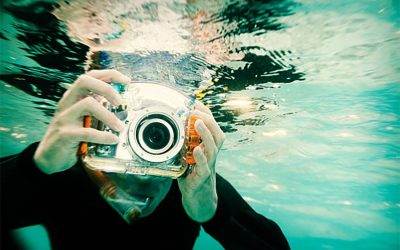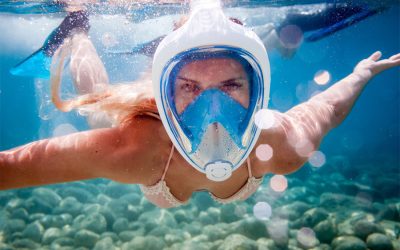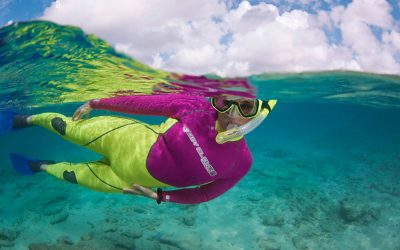The Best Scuba Diving In Hawaii - Discovering Hawaii's Best Scuba Diving Destinations
Hawaii’s crystal-clear waters and vibrant coral reefs paint a picture of paradise for scuba divers. From playful dolphins and majestic manta rays to unique lava tubes and sheer walls, each dive offers an unforgettable adventure.
Whether you’re a seasoned explorer or a curious beginner, there’s an island and dive site perfect for you. But planning is key! Choose your island wisely, book accommodations and dive trips early, and pack reef-safe gear.
Here’s a brief overview of what makes Hawaii so special for scuba divers:
Diverse marine life: From majestic manta rays and playful dolphins to colorful reef fish and elusive sharks, Hawaii’s waters are teeming with life. You’ll encounter a variety of species unique to the region, making each dive an exciting adventure.
Stunning coral reefs: Hawaii boasts some of the healthiest and most vibrant coral reefs in the world. These underwater gardens are teeming with life and provide a breathtaking backdrop for your dives.
Unique underwater landscapes: From lava tubes and sunken craters to swim-throughs and sheer walls, Hawaii’s underwater terrain is as diverse as its marine life. Each dive site offers a unique experience, leaving you wanting more.
Remember, respect the environment and follow regulations to ensure Hawaii’s underwater magic thrives for generations to come. Dive in and discover the “best” scuba diving in Hawaii, a truly unforgettable experience.
This site uses affiliate links which may earn a commission at no additional cost to you
Here's What You'll Learn About The Best Scuba Diving In Hawaii
In this comprehensive guide to the best scuba diving in Hawaii, readers will embark on a journey through the depths of the Pacific Ocean, uncovering the unparalleled beauty and adventure awaiting beneath the waves.
Whether seeking thrilling wreck dives or tranquil encounters with diverse marine life, this guide equips readers with everything they need to plan an unforgettable scuba diving adventure in Hawaii.
Scuba Diving Hawaii: What Is The Best Scuba Diving In Hawaii?
St. Thomas boasts a diverse underwater landscape, from vibrant coral reefs and swim-throughs to historical shipwrecks and teeming marine life. Whether you’re a seasoned diver or just starting out, there’s a perfect dive site waiting for you!
Here are the top 10 must-se dive sites around St. Thomas, USVI
1. The Big Island of Hawaii: A Journey into Underwater Majesty
The Big Island of Hawaii is a diver’s paradise, boasting a myriad of captivating underwater experiences that showcase the island’s rich marine life and diverse landscapes. From the mesmerizing ballet of manta rays to the otherworldly beauty of lava tubes, and encounters with sharks and turtles, diving off the coast of the Big Island offers an unforgettable adventure beneath the waves.
Manta Rays: Witness the Majestic Ballet in Kona
One of the most enchanting experiences awaiting divers on the Big Island is the opportunity to witness the graceful dance of manta rays in the waters off Kona. These gentle giants, with their wingspans stretching up to 20 feet, gather near the coastline to feed on plankton attracted by underwater lights.
Diving with manta rays is a surreal experience, as these majestic creatures glide effortlessly through the water, performing intricate loops and spins. Night dives are particularly popular for manta encounters, as the darkness enhances the visibility of their bioluminescent markings, creating a mesmerizing spectacle that leaves divers in awe.
Lava Tubes: Explore the Otherworldly Wonders of Kona Coast
Beneath the surface of the Kona Coast lies a hidden world of geological wonders known as lava tubes. Formed by ancient volcanic activity, these subterranean passages offer a glimpse into the island’s fiery past.
Exploring lava tubes while scuba diving is like venturing into another dimension, with eerie rock formations and tunnels carved by molten lava millions of years ago. Divers can navigate through these labyrinthine passages, marveling at the surreal beauty of stalactites and stalagmites formed by dripping lava.
Diverse Landscapes: Dive with Sharks and Turtles along the Kohala Coast
Beyond the mesmerizing encounters with manta rays and the otherworldly allure of lava tubes, the Big Island’s underwater landscapes offer a diverse array of marine habitats teeming with life. Along the Kohala Coast, divers can dive with sharks and turtles amidst vibrant coral reefs and underwater canyons.
Shark dives provide a thrilling opportunity to observe these apex predators in their natural environment, while encounters with green sea turtles offer a more serene experience as these gentle creatures gracefully glide through the water.
Whether exploring the depths of lava tubes, marveling at the ballet of manta rays, or diving with sharks and turtles, scuba diving on the Big Island of Hawaii promises an adventure like no other. With its rich marine biodiversity and awe-inspiring landscapes, the island’s underwater world beckons divers to embark on a journey of discovery and wonder beneath the waves.
Here’s a list of some of the top scuba dive sites around the Big Island of Hawaii:
1. Manta Ray Night Dive - Kona Coast: Experience the mesmerizing dance of manta rays as they glide gracefully through the water under the glow of underwater lights.
2. Cavern Point - Kona Coast: Explore a series of lava tubes and caverns teeming with marine life, including colorful reef fish, eels, and octopuses.
3. Puako - Kohala Coast: Dive along vibrant coral reefs and underwater cliffs, home to a diverse array of marine species such as turtles, sharks, and tropical fish.
4. Turtle Pinnacle - Kona Coast: Encounter green sea turtles and other marine life at this popular dive site known for its abundance of coral formations and underwater structures.
5. Kealakekua Bay: Dive into the crystal-clear waters of this marine sanctuary, where you can swim among schools of fish, explore coral gardens, and even spot spinner dolphins.
6. Blackwater Dive - Offshore: Venture into the deep waters offshore for a unique night dive experience, where you can encounter rare and exotic marine creatures that rise from the depths.
7. Place of Refuge (Pu’uhonua o Honaunau) - Kona Coast: Discover ancient Hawaiian history while diving around the sacred grounds of Pu’uhonua o Honaunau, where you can explore underwater archaeological sites and encounter marine life.
8. Garden Eel Cove - Kona Coast: Dive along a sandy bottom populated by garden eels swaying in the current, and explore rocky outcrops and coral formations inhabited by a variety of marine species.
9. Lau’ipala Sea Mount - Offshore: Journey to the submerged seamounts off the Big Island’s coast for encounters with pelagic species such as sharks, rays, and large schools of fish.
10. Pele’s Playground - Kona Coast: Explore a series of lava tubes, arches, and swim-throughs formed by volcanic activity, where you can encounter unique marine life and dramatic underwater landscapes.
2. Maui
Maui, Hawaii, is renowned for its stunning landscapes, golden beaches, and vibrant culture. Beneath the turquoise waters that surround this island paradise lies a world of wonder waiting to be explored. From historic wrecks to kaleidoscopic coral reefs and thrilling encounters with marine life, Maui offers an unforgettable scuba diving experience that caters to divers of all levels.
Wrecks: Dive the WWII YO-257 Submarine
For history enthusiasts and adventure seekers alike, exploring sunken wrecks off the coast of Maui provides a glimpse into the island’s past. One notable wreck dive is the WWII YO-257 submarine, resting in the depths off the shores of Lahaina. This decommissioned Navy vessel is now a thriving artificial reef, home to a diverse array of marine life including schools of tropical fish, sea turtles, and octopuses. Diving the YO-257 offers a unique opportunity to witness history firsthand while immersing oneself in the vibrant underwater world of Maui.
Coral Reefs: Explore Vibrant Gardens off Hanauma Bay
Maui’s coral reefs are among the most biodiverse ecosystems in the world, teeming with colorful fish, intricate coral formations, and other marine creatures. Off the coast of Hanauma Bay, divers can explore vibrant coral gardens brimming with life.
These shallow reefs are perfect for divers of all levels, offering a kaleidoscopic display of colors and textures that rival any tropical paradise. From elusive seahorses to graceful eagle rays, Hanauma Bay’s coral reefs are a treasure trove of underwater delights waiting to be discovered.
City Vibes: Night Dives with Manta Rays and Sharks
As the sun sets over Maui’s horizon, the underwater world awakens with a whole new cast of characters. Night dives offer a thrilling opportunity to encounter nocturnal marine life, including majestic manta rays and awe-inspiring sharks.
Off the coast of Maui, night dives with manta rays are a highlight for many divers, as these graceful giants glide effortlessly through the water, illuminated by underwater lights. For those seeking a more adrenaline-fueled experience, night dives with sharks provide a heart-pounding adventure as divers come face-to-face with these apex predators in their natural habitat.
From historic wrecks to vibrant coral reefs and thrilling night dives, Maui offers a diverse array of underwater experiences that cater to every diver’s interests and skill levels.
Whether exploring sunken relics, marveling at colorful marine life, or embarking on adrenaline-pumping adventures, Maui’s underwater paradise promises an unforgettable scuba diving adventure unlike any other.
Here’s a list of some of the top scuba dive sites around the island:
1. Molokini Crater: This crescent-shaped partially submerged volcanic crater is a marine sanctuary and one of Maui’s most famous dive sites. It offers crystal-clear waters, abundant marine life including reef sharks, colorful fish, and vibrant coral formations.
2. Cathedral I & II: Located off the coast of Lanai, these underwater cathedrals are known for their dramatic arches, caverns, and tunnels. Divers can explore the cathedral-like structures adorned with colorful coral and encounter marine life such as turtles, moray eels, and reef sharks.
3. Mala Wharf: This sunken wharf near Lahaina is now an artificial reef teeming with marine life. Divers can explore the remains of the wharf, which is covered in coral and inhabited by a variety of fish species including jacks, butterflyfish, and octopuses.
4. Black Rock: Situated at the northern end of Ka’anapali Beach, Black Rock offers a unique diving experience with a combination of lava formations, caves, and swim-throughs. Divers can encounter turtles, eagle rays, and reef sharks in this area known for its rich biodiversity.
5. Honolua Bay: This marine preserve on Maui’s northwest coast boasts pristine coral reefs, underwater cliffs, and a vibrant array of marine life. Divers can explore coral gardens teeming with tropical fish, octopuses, and sometimes even Hawaiian monk seals.
6. Turtle Town: Located off the coast of Makena, Turtle Town is aptly named for its abundance of green sea turtles. Divers can swim alongside these graceful creatures as they navigate through coral gardens and lava formations.
7. Five Caves: Near the Makena Landing, this dive site features a series of underwater lava tubes and caverns inhabited by colorful reef fish, octopuses, and moray eels. Divers can explore the caves and encounter marine life in this dynamic underwater landscape.
8. La Perouse Bay: This rugged coastline at the southern tip of Maui offers dramatic lava formations and clear waters ideal for diving. Divers can explore underwater lava flows, swim-throughs, and encounter marine life such as butterflyfish, surgeonfish, and white-tip reef sharks.
9. Back Wall of Molokini Crater: For experienced divers, the back wall of Molokini Crater offers a thrilling drift dive along sheer drop-offs and steep walls. Divers can spot pelagic species such as sharks, manta rays, and barracudas in the deep blue waters surrounding the crater.
10. Pinnacle Point: Located off the coast of Maui’s northeast shore, Pinnacle Point features underwater pinnacles and rock formations teeming with marine life. Divers can explore colorful coral gardens, encounter turtles, and observe reef fish darting in and out of the crevices.
3. Molokai and Lanai
Here’s a list of some of the top scuba dive sites around Molokai and Lanai, Hawaii:
Molokai:
1. Molokai Fringing Reef: Explore the longest fringing reef in Hawaii, teeming with vibrant coral gardens, tropical fish, and marine life. This pristine reef system offers a variety of dive sites along the coastline of Molokai, each with its own unique underwater landscapes and biodiversity.
2. Fish Rainbows: Located off the southern coast of Molokai, Fish Rainbows is a popular dive site known for its abundance of colorful fish species, including butterflyfish, angelfish, and surgeonfish. Divers can also encounter green sea turtles and occasionally Hawaiian monk seals.
3. Mokuhooniki Rock: This underwater pinnacle off the northern coast of Molokai is home to a diverse array of marine life, including sharks, eagle rays, and large schools of fish. The pinnacle rises from the depths, providing an opportunity for exciting wall dives and encounters with pelagic species.
Lanai:
1. Cathedrals I & II: These iconic dive sites off the southern coast of Lanai feature dramatic lava tube formations resembling cathedral arches. Divers can swim through the caverns and tunnels, illuminated by shafts of sunlight filtering through the openings above. Marine life such as moray eels, octopuses, and colorful reef fish inhabit these unique underwater landscapes.
2. First Cathedral: Situated near Cathedrals I & II, First Cathedral is another captivating dive site known for its cathedral-like lava tube formations. Divers can explore the caverns and tunnels adorned with colorful coral and encounter marine life such as Hawaiian lionfish, nudibranchs, and green sea turtles.
3. Shark Fin Rock: As the name suggests, Shark Fin Rock is a pinnacle dive site off the coast of Lanai where divers can encounter reef sharks, whitetip sharks, and occasionally hammerhead sharks. The pinnacle rises from the depths, attracting a variety of pelagic species and offering thrilling dive experiences.
4. No Name Beach: This secluded dive site on the northern coast of Lanai offers pristine coral reefs, underwater caves, and lava formations. Divers can explore the vibrant marine life inhabiting the reefs, including colorful fish, turtles, and occasionally spotted eagle rays.
4. Oahu
Oahu, Hawaii’s most populous island, is not only famous for its bustling city life and iconic Waikiki Beach but also for its vibrant underwater world.
From historic wrecks to kaleidoscopic coral reefs and thrilling encounters with marine giants, Oahu offers a diverse array of scuba diving experiences that cater to every diver’s passion and skill level.
Wrecks: Dive the WWII YO-257 Submarine
For history buffs and adventure seekers alike, diving the WWII YO-257 submarine off the coast of Oahu is an unforgettable experience. This decommissioned Navy vessel rests peacefully on the ocean floor, now serving as an artificial reef teeming with marine life.
As divers descend into the depths, they’ll encounter schools of tropical fish swirling around the submarine’s hull, while moray eels and octopuses make their homes within its crevices. Exploring the YO-257 is like stepping back in time, offering a glimpse into a pivotal chapter of history while immersing oneself in the beauty of Oahu’s underwater realm.
Coral Reefs: Explore Vibrant Gardens off Hanauma Bay
Hanauma Bay, a protected marine sanctuary nestled along Oahu’s southeastern shore, is renowned for its vibrant coral gardens and abundant marine life.
Diving off the shores of Hanauma Bay, divers can explore a kaleidoscope of colors as they navigate through coral canyons and swim alongside schools of tropical fish.
From butterflyfish and parrotfish to trumpetfish and unicornfish, the reef is alive with activity, providing endless opportunities for underwater photography and exploration.
With its crystal-clear waters and diverse marine ecosystem, Hanauma Bay offers a mesmerizing underwater experience that’s sure to leave a lasting impression.
City Vibes: Night Dives with Manta Rays and Sharks
As the sun sets and the city lights of Honolulu begin to twinkle, a whole new world comes to life beneath the surface of Oahu’s waters. Night dives with manta rays and sharks offer a thrilling opportunity to witness these majestic creatures in their nocturnal habitat.
Off the coast of Oahu, divers can descend into the darkness, guided only by the glow of their dive lights, as graceful manta rays swoop and somersault through the water, feeding on plankton illuminated by underwater lights.
Meanwhile, encounters with sharks add an extra adrenaline rush to the dive, as divers come face-to-face with these apex predators in a thrilling display of natural beauty and power.
Embark on an Underwater Adventure in Oahu
Whether you’re exploring historic wrecks, marveling at vibrant coral reefs, or embarking on night dives with manta rays and sharks, Oahu offers an underwater adventure like no other.
With its rich marine biodiversity and captivating dive sites, the island beckons divers to explore its depths and discover the wonders that lie beneath the surface.
So pack your gear, dive into the turquoise waters of Oahu, and prepare for an unforgettable scuba diving experience in paradise.
Here’s a list of some of the top scuba dive sites around Oahu, Hawaii:
1. YO-257 and San Pedro Wrecks: These two wrecks lie near each other off the coast of Waikiki. The YO-257 is a WWII Navy fuel tanker sitting upright in about 100 feet of water, while the San Pedro is a sunken tugboat nearby. Both wrecks are covered in coral and teeming with marine life, including turtles, eels, and reef fish.
2. Hanauma Bay: This marine preserve on the southeastern shore of Oahu offers shallow, easy dives with colorful coral gardens and abundant marine life. It’s a great spot for beginners and experienced divers alike, with sightings of reef fish, turtles, and occasionally eagle rays.
3. Electric Beach (Kahe Point Beach Park): Located on the western shore of Oahu, Electric Beach is known for its warm water and strong currents that attract large schools of fish, including jacks, barracudas, and occasionally dolphins. The nearby power plant discharge creates a unique underwater environment with excellent visibility.
4. Spitting Caves: This advanced dive site off the southeastern coast of Oahu features underwater caves and tunnels formed by lava flows. Divers can explore the rugged coastline and encounter marine life such as octopuses, eels, and reef sharks.
5. Makaha Caverns: Situated off Oahu’s western coast, Makaha Caverns offers thrilling dives through underwater lava tubes and caverns. Divers can navigate through swim-throughs and encounter marine life such as moray eels, lobsters, and colorful reef fish.
6. Sea Tiger Wreck: This sunken Chinese cargo ship lies off the coast of Honolulu in about 120 feet of water. The Sea Tiger is one of Oahu’s most popular wreck dives, with opportunities to explore the ship’s interior and encounter marine life such as frogfish, lionfish, and nudibranchs.
7. Three Tables: Located on the North Shore of Oahu, Three Tables is named after three flat rock formations visible from the surface. Beneath the waves, divers can explore coral formations, arches, and swim-throughs inhabited by a variety of marine life, including turtles, octopuses, and reef sharks.
8. Turtle Canyon: Situated off the coast of Waikiki, Turtle Canyon is a popular dive site known for its abundance of green sea turtles. Divers can swim alongside these gentle giants as they feed on algae and navigate through coral reefs inhabited by colorful fish and eels.
9. Corsair Plane Wreck: This WWII fighter plane lies in about 107 feet of water off the southern coast of Oahu. The Corsair is an advanced dive site, with opportunities to explore the wreckage and encounter marine life such as sharks, jacks, and eagle rays.
10. Koko Craters: Located off the southeastern coast of Oahu, Koko Craters features a series of underwater volcanic craters and tunnels. Divers can explore the rugged terrain and encounter marine life such as nudibranchs, frogfish, and schools of goatfish.
Check Out These Exciting Scuba Diving Excursions On Maui
4. Kauai
Oahu, Hawaii’s vibrant and diverse island, boasts not only bustling cityscapes but also stunning natural wonders beneath its turquoise waters.
From the dramatic cliffs of the Na Pali Coast to hidden reefs teeming with life, and encounters with spinner dolphins and humpback whales, Oahu offers a scuba diving experience that captivates the senses and leaves a lasting impression.
Dive along the Dramatic Na Pali Coast Cliffs
The Na Pali Coast on the northwestern shore of Oahu is a sight to behold, with towering cliffs plunging into the ocean below. Diving along this dramatic coastline is an awe-inspiring experience, as divers are treated to underwater vistas unlike any other.
Underwater rock formations, caves, and crevices provide a haven for marine life, while crystal-clear waters offer visibility that seems to stretch on forever.
As divers glide through the water, they may encounter reef sharks patrolling the depths, sea turtles gracefully navigating through coral gardens, and vibrant schools of fish darting among the rocky outcrops.
The Na Pali Coast is a testament to the raw beauty of nature, and exploring its underwater realm is an adventure not to be missed.
Discover Hidden Reefs Teeming with Colorful Fish
While Oahu’s iconic landmarks often steal the spotlight, the island’s hidden reefs offer a world of wonder waiting to be explored. Nestled beneath the surface lie vibrant coral gardens teeming with life, home to a kaleidoscope of colors and shapes. These hidden reefs may not be as well-known as their counterparts, but they are no less captivating.
Diving among these hidden reefs, divers may encounter butterflyfish, angelfish, and surgeonfish flitting among the coral, while moray eels peek out from their rocky hideaways.
Nudibranchs, shrimp, and other macro critters adorn the reef, adding to the diversity of marine life found in these underwater oases.
Encounter Spinner Dolphins and Humpback Whales
Oahu’s waters are home to a rich variety of marine life, including spinner dolphins and humpback whales. Spinner dolphins are known for their acrobatic displays, leaping and spinning through the air as they travel in pods along the coastline.
Diving with spinner dolphins is a magical experience, as these playful creatures interact with divers in their natural environment.
During the winter months, humpback whales migrate to the warm waters of Hawaii to breed and calve. Diving with humpback whales is a humbling experience, as these gentle giants glide gracefully through the water, their haunting songs echoing through the depths.
Encounters with these majestic creatures leave a lasting impression and highlight the importance of preserving Oahu’s marine ecosystem.
Embark on an Underwater Adventure in Oahu
From the dramatic cliffs of the Na Pali Coast to hidden reefs teeming with life and encounters with spinner dolphins and humpback whales, Oahu’s underwater world offers a wealth of experiences for divers of all levels.
Whether exploring iconic dive sites or seeking out hidden gems, diving in Oahu is a journey of discovery and wonder that promises to leave a lasting impression on all who venture beneath the waves.
Here’s a list of some of the top scuba dive sites around Kauai, Hawaii:
1. Tunnels Beach (Makua Beach): Located on the north shore of Kauai, Tunnels Beach is famous for its underwater lava tubes and tunnels, which provide habitat for a diverse array of marine life. Divers can explore coral reefs, swim-throughs, and encounter species such as turtles, reef sharks, and octopuses.
2. Sheraton Caverns: Situated off Poipu Beach on the south shore of Kauai, Sheraton Caverns is a series of underwater lava tubes and caverns that offer thrilling dive experiences. Divers can explore the caverns and encounter marine life such as moray eels, lionfish, and colorful reef fish.
3. Brennecke’s Ledge: Another dive site off Poipu Beach, Brennecke’s Ledge features a sloping reef with coral formations and underwater arches. Divers can swim along the ledge and encounter marine life such as turtles, eagle rays, and occasionally dolphins.
4. Ni’ihau: Known as the “Forbidden Island,” Ni’ihau lies southwest of Kauai and offers some of the most pristine dive sites in Hawaii. Divers can explore coral reefs, drop-offs, and underwater pinnacles, encountering large pelagic species such as sharks, rays, and tuna.
5. The Cathedrals: Located off the northern coast of Kauai near Kilauea, The Cathedrals is a series of underwater lava tube formations resembling cathedral arches. Divers can swim through the caverns and encounter marine life such as turtles, whitetip reef sharks, and schools of fish.
6. Koloa Landing: Situated on the south shore of Kauai, Koloa Landing is a popular dive site known for its abundant marine life and underwater topography. Divers can explore coral gardens, lava formations, and encounter species such as frogfish, nudibranchs, and Hawaiian monk seals.
7. Fast Lanes: Located off the coast of Kauai’s west side, Fast Lanes is a drift dive site known for its strong currents and diverse marine life. Divers can drift along underwater canyons and encounter pelagic species such as sharks, jacks, and barracudas.
8. General Store: Another dive site off Kauai’s west side, General Store features a sloping reef with coral formations, swim-throughs, and underwater arches. Divers can explore the reef and encounter marine life such as turtles, octopuses, and reef fish.
9. Nualolo Kai: This marine preserve on the northwest coast of Kauai offers pristine coral reefs, underwater caves, and abundant marine life. Divers can explore the reef and encounter species such as parrotfish, butterflyfish, and Hawaiian monk seals.
10. Mana Crack: Situated off Kauai’s south shore, Mana Crack is a series of underwater lava fissures that create a unique diving experience. Divers can swim through the cracks and encounter marine life such as turtles, eels, and reef fish.
Check Out These Exciting Scuba Diving Excursions On Kauai
The Best Scuba Diving in Hawaii: Essential Considerations for Your Dive Trip
1. Skill Level: Beginner, Intermediate, Or Advanced
2. Exploring the Best Scuba Diving in Hawaii: Understanding Seasonal Variations
Scuba diving in Hawaii is an adventure that’s thrilling year-round, but understanding the seasonal variations can enhance your experience and ensure you make the most of your underwater explorations. From encountering humpback whales in the winter to navigating stronger currents in the summer, each season brings its own unique charms and challenges for divers.
Winter (November to March):
During the winter months, from November to March, Hawaii welcomes one of its most magnificent visitors: the humpback whale. These majestic creatures migrate from colder waters to the warm Hawaiian shores to breed and give birth, making winter the perfect time for whale watching excursions and underwater encounters.
-
Humpback Whales: Humpback whales are a common sight during winter dives, with their playful breaches and haunting songs adding an extra dimension to the underwater experience. Divers may hear the haunting melodies of male whales singing to attract mates or witness mothers nurturing their calves in the sheltered waters of Hawaiian bays.
-
Calmer Waters: Winter typically brings calmer seas and clearer visibility, making it an ideal time for diving along the shores of Hawaii’s islands. With reduced wind and surface chop, divers can enjoy tranquil dives with improved visibility, allowing for better sightings of marine life and underwater landscapes.
Summer (April to October):
In contrast to the winter months, summer in Hawaii brings warmer waters and stronger currents, offering a different set of conditions for divers to navigate. While the currents may be more challenging, summer also brings an abundance of marine life and vibrant coral reefs to explore.
-
Warmer Water: As temperatures rise during the summer months, the waters surrounding Hawaii become warmer and more inviting for divers. Warmer water temperatures make for more comfortable dives, allowing divers to spend longer periods exploring the underwater world without the need for thick wetsuits.
-
Stronger Currents: With the arrival of summer comes stronger ocean currents, particularly along the channels between the islands. While these currents can provide exhilarating drift dives and bring nutrient-rich waters that attract pelagic species, they also require careful planning and diving experience to navigate safely.
Planning Your Dive Adventure:
When planning your scuba diving trip to Hawaii, it’s essential to consider the seasonal variations in visibility, currents, and marine life to ensure you have a safe and enjoyable experience underwater.
-
Winter: If you’re hoping to encounter humpback whales and enjoy calm, clear waters, plan your trip between November and March. Be sure to book whale watching excursions in advance to maximize your chances of spotting these magnificent creatures.
-
Summer: For warmer water temperatures and the chance to dive amidst vibrant marine life, opt for a summer dive trip between April and October. Keep in mind the stronger currents and plan your dives accordingly, choosing sites that are suitable for your skill level and experience.
By understanding the seasonal variations in Hawaii’s underwater environment, you can plan your dive adventure to coincide with the conditions that best suit your interests and skill level, ensuring a memorable and rewarding experience exploring the Aloha State’s spectacular underwater world.
3. The Best Scuba Diving Experience in Hawaii: A Guide to Gear and Equipment
Scuba diving in Hawaii offers an unforgettable journey into a vibrant underwater world teeming with marine life and breathtaking landscapes. While the islands boast a plethora of dive sites waiting to be explored, having the right gear and equipment is essential for a safe and enjoyable experience beneath the waves.
From wetsuits tailored to the season to essential accessories like masks and dive computers, here’s everything you need to know about gearing up for your Hawaiian dive adventure.
Having gear that fits properly and meets your specific preferences can enhance your comfort and confidence underwater, leading to a more enjoyable diving experience.
Wetsuit Thickness Depends on Season and Location
One of the most critical pieces of equipment for diving in Hawaii is a wetsuit, as water temperatures can vary depending on the season and location.
In general, the waters around Hawaii are warm year-round, but wetsuit thickness may vary based on factors such as depth, time of year, and individual comfort levels.
- Winter (November to March): During the winter months, water temperatures may dip slightly, especially at greater depths. A 3mm to 5mm wetsuit is typically sufficient for most dives during this time, providing warmth and protection against cooler waters.
- Summer (April to October): In the summer, water temperatures are warmer, making a lighter wetsuit or even a shorty suitable for most dives. A 2mm to 3mm wetsuit is often comfortable in the summer months, allowing for greater flexibility and mobility underwater.
Essential Gear: Mask, Fins, Snorkel, and Dive Computer
While rental gear covers the basics, there are a few essential items that every diver should consider bringing along for their Hawaiian dive adventure:
- Mask: A properly fitting mask is essential for clear vision underwater. Choose a mask with a silicone skirt and adjustable straps for a comfortable and secure fit.
- Fins: Fins provide propulsion and maneuverability underwater, allowing you to glide effortlessly through the water. Look for fins that fit snugly but comfortably and consider the type of diving you’ll be doing when selecting your fins.
- Snorkel: While not always necessary for scuba diving, a snorkel can be handy for surface swims, surface intervals, and snorkeling excursions between dives.
- Dive Computer: A dive computer is a vital piece of safety equipment that provides real-time information on dive depth, time, and decompression limits. Investing in a reliable dive computer can enhance your safety and enjoyment during dives in Hawaii’s diverse underwater environments.
Check Out These Essential Scuba Gear
4. Navigating the Best Scuba Diving in Hawaii: Tips for Booking and Permits
Scuba diving in Hawaii promises unparalleled adventures beneath the waves, but proper planning is key to ensuring a smooth and unforgettable experience. From securing permits for specific dives to booking accommodations and dive trips in advance, here’s everything you need to know to make the most of your Hawaiian dive adventure.
Booking and Permits: Plan in Advance, Especially During Peak Season
Hawaii’s popularity as a scuba diving destination means that dive sites, accommodations, and dive operators can fill up quickly, especially during peak seasons. To avoid disappointment and secure your spot, it’s essential to plan your dive trip well in advance.
- Peak Season: Hawaii experiences peak tourist seasons during the summer months (April to October) and winter holidays (December to February). During these times, dive operators and accommodations tend to be busiest, and availability may be limited. Plan ahead and consider booking accommodations and dive trips several months in advance to ensure availability and avoid last-minute rush.
- Off-Peak Season: While Hawaii enjoys warm weather and great diving conditions year-round, the shoulder seasons (spring and fall) offer fewer crowds and sometimes lower prices for accommodations and dive trips. Consider planning your dive trip during these off-peak times for a more relaxed experience and better availability.
Permits for Specific Dives: Know Before You Go
Certain dive sites in Hawaii require permits or special permissions for access, particularly those located in protected marine areas or cultural sites. Before embarking on your dive adventure, it’s essential to research and familiarize yourself with any permit requirements for the specific dives you plan to undertake.
- Marine Protected Areas: Hawaii is home to several marine protected areas (MPAs) that require permits for diving, fishing, or other recreational activities. Examples include the Hanauma Bay Marine Life Conservation District on Oahu and the Kealakekua Bay State Historical Park on the Big Island. Be sure to obtain any necessary permits in advance to avoid fines or penalties.
- Cultural Sites: Some dive sites in Hawaii are located within culturally significant areas or sites of historical importance. These sites may have special access restrictions or permit requirements to protect their cultural and environmental integrity. Research the cultural significance of dive sites and obtain permits or permissions as needed to ensure respectful and responsible diving practices.
Book Accommodations and Dive Trips Early
To make the most of your Hawaiian dive adventure, it’s essential to book accommodations and dive trips early, especially during peak seasons.
Planning the Best Scuba Diving in Hawaii
While scuba diving in Hawaii is undoubtedly a highlight of any trip, the islands offer much more beyond the dive sites. From selecting accommodations that suit your preferences to exploring the rich cultural heritage and indulging in outdoor activities, planning your Hawaiian adventure is key to making the most of your time in paradise.
Accommodation: Choose Based on Your Desired Location and Budget
Hawaii boasts a diverse range of accommodations to suit every traveler’s needs, from luxurious beachfront resorts to budget-friendly options and charming vacation rentals.
- Beachfront Resorts: Treat yourself to a luxurious stay at one of Hawaii’s beachfront resorts, where you can wake up to stunning ocean views and enjoy world-class amenities such as spas, restaurants, and water sports facilities. Resorts like the Four Seasons Resort Maui at Wailea or the Royal Hawaiian Hotel on Oahu offer unparalleled comfort and convenience.
- Budget-Friendly Options: For travelers on a tighter budget, there are plenty of affordable accommodations available across the islands. From cozy guesthouses and hostels to budget hotels and Airbnb rentals, you can find comfortable lodging without breaking the bank.
- Vacation Rentals: For a more authentic and immersive experience, consider booking a vacation rental such as a condo or beach house. Vacation rentals offer the flexibility to cook your meals, relax in private spaces, and live like a local while exploring Hawaii’s diverse landscapes and attractions.
1. Check Out Travel & Accommodations For Your Hawaii Scuba Trip
Diver Alert Network (DAN): The Lifeline Below - Exploring Its Services and Impact
Diving, whether for recreational or professional purposes, presents unique challenges and risks that demand specialized safety protocols and support systems. Among these, the Diver Alert Network (DAN) stands out as a cornerstone of diver safety worldwide.
Established with the mission of promoting safe diving through research, education, and emergency assistance, DAN has become an indispensable resource for divers and the diving industry.
Services Offered by DAN: Central to DAN’s mission is its provision of critical services aimed at safeguarding divers’ well-being before, during, and after their underwater excursions. These services include:
1. Medical Information Hotline: DAN operates a round-the-clock hotline staffed by medical professionals well-versed in dive medicine. Divers can seek advice on pre-dive health considerations, decompression illness, injury management, and other medical concerns.
2. Dive Safety Education: Recognizing the importance of informed decision-making in preventing accidents, DAN offers a wealth of educational resources. These range from online courses covering topics like dive safety, first aid, and emergency oxygen administration to in-person seminars and workshops conducted by seasoned dive safety experts.
3. Research and Advocacy: DAN is at the forefront of dive medicine research, conducting studies to enhance our understanding of diving physiology, injury mechanisms, and risk factors. Findings from these studies inform the development of evidence-based guidelines and best practices, which DAN actively promotes within the diving community and industry stakeholders.
4. Emergency Evacuation and Assistance: In the event of a diving-related emergency, DAN’s global network facilitates timely evacuation and medical treatment for affected individuals. Whether through direct intervention or coordination with local emergency services, DAN ensures that divers receive the care they need, wherever they may be.
Beyond The Dive - Exploring Beautiful Hawaii
Hawaii is a diver’s paradise, boasting vibrant coral reefs, diverse marine life, and unique underwater experiences. But the islands offer much more than just incredible scuba encounters. Whether you’re a seasoned diver or accompanying someone who is, there’s a wealth of activities to fill your Hawaiian adventure.
Additional Activities for Divers:
- Cultural Immersion: Each island has its own unique cultural treasures. Learn about Polynesian history and traditions in museums, attend a luau with traditional dance and food, or visit sacred sites like ancient temples.
- Hiking Adventures: Hawaii’s volcanic landscapes offer stunning hiking trails for all levels. Hike through lush rainforests, witness active volcanoes, or reach breathtaking viewpoints with panoramic island vistas.
- Snorkeling: Explore the underwater world without scuba gear. Many dive sites also offer excellent snorkeling, allowing non-certified divers to witness the beauty of the reefs.
- Stand-Up Paddleboarding and Kayaking: Glide across calm waters, soaking in the scenery and spotting marine life like sea turtles and dolphins. Kayaking through lava tubes on the Big Island is a unique adventure.
- Surfing: Catch a wave if you’re experienced or take a beginner lesson on calmer shores. Some dive shops offer surf-and-dive packages.
1. Check Out These Exciting Island Excursions In Hawaii
Hawaii Big Island
Maui
Kauai
Scuba Diving Hawaii - FAQs
Here Are Some Additional Articles You May Want To Check Out
The Ultimate Diving Equipment List: Essential Gear For Every Diver
13 Best Scuba Gear Packages: Beginner To Advanced
Scuba Diving St.Thomas: Your Ultimate Guide To Underwater Exploration
Roatan Scuba Diving: Exploring Roatan’s Underwater Beauty
Best Caribbean Sailing Destinations: A Sailor’s Guide To Paradise
Embark on Adventure: Scuba Diving Hawaii
Dive The World
Check Out Related Posts
Best Scuba Diving Camera For Beginners: The Top Picks For 2024
Selecting the best scuba diving camera for beginners is crucial as it can significantly enhance their underwater experience and immortalize unforgettable moments beneath the surface. These cameras enable divers to capture the awe-inspiring beauty of vibrant marine...
7 Best Full Face Snorkel Masks for Every Adventurer
Gazing at the wonders of the underwater world is an incredible experience, but traditional snorkel gear can sometimes get in the way. If you're looking to explore the reef with ease and maximum comfort, then a full face snorkel mask might be for you. These innovative...
Bonaire Snorkeling Adventures: A Snorkler’s Complete Guide
Bonaire beckons snorkelers to explore its enchanting underwater world, making it a premier destination for those seeking unparalleled experiences beneath the waves. With its fringing coral reefs, protected marine parks, and abundant marine life, Bonaire snorkeling...
